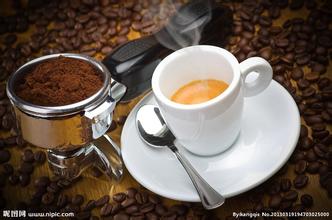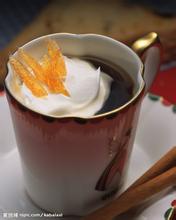The reproduction mode of small-grain coffee
Seed
Choose the coffee mother tree which is fully ripe, normal in shape, full in shape, the same size and with two seeds. To remove the peel of the selected fruit, you must be careful to prevent the seeds from being damaged and affect the germination rate, and then put the peeled seeds in a ventilated and cool place to dry. After the seed shell is whitened, the seeds can be stored, and the seeds can not be exposed to the sun. Put the seeds into bamboo baskets or cloth bags and turn them once a month in the mild sun, so that the seeds stored for a long time can maintain a high germination rate. Coffee seedlings need shade conditions, so the seedling land should be selected in shady slopes and sandy soil areas with certain shade conditions and water sources. The general method of seedling preparation is adopted to dig and loosen the soil into a seedbed and then sow seeds. According to sowing 1kg seeds, 1.5m2 seedbed is needed, and there are about 3500-4000 seeds per kilogram. If the emergence rate is more than 80%, 2500-3000 seedlings can be transferred. The seeds can be soaked in 40 ℃ warm water for 12 hours before sowing, and the effect is the best. [5]
Cuttage
Cutting materials with straight branches, can not use a branch, because a branch cuttings after the new plant can only grow creeping, can not grow into a straight coffee tree. Cuttings should be cut with green uncorked, fully aged leaves, robust straight terminal buds at the bottom of paragraphs 2-3, not semi-corked and corked straight branches. The leaves of cuttings are four inches wide (about 6-8 cm), and each section of cuttings is 4-6 cm long. The cuttings are cut into two pieces, each with a blade, and the cut is oblique and smooth.
The slotting machine generally uses a sand bed with a thickness of 40-50 cm, with coarse sand in the lower part and medium fine sand in the upper part. The shade degree of the slotting bed should be 80-90%. Wash the sand first when using it, or you can mix it with the coconut bran of 1 stroke 2. Using spray equipment, the rooting rate of cuttings is high, but the cost of equipment purchase is high.
The cuttings can be cut obliquely or directly, and the cutting depth is buried at the leaf node. 10-15 cm in a row, with the leaves not covering each other as the standard. Fully sprinkle with water after insertion to make the cuttings in close contact with the sand. After cutting, plastic film should be covered on the cutting bed to reduce water evaporation and improve the rooting rate of cuttings. When covering the plastic film, it should be arched with iron wire or bamboo, inserted on the edge of the sand bed, and then covered with the plastic film, and then pressed to maintain the humidity in the bed. If spray equipment is used, there is no need to cover plastic film. [6]
Grafting
Budding method: using one-year-old seedlings, wipe the soil at the base of the stem, then open a 2.5-3.5 cm long bud, select well-developed nodes from a good mother tree or proliferation nursery, cut off the buds with a small amount of xylem, put them into the bud graft, bind the bud tightly with a binding band, open the bud point after 20 days, 30-40 budding interface has healed, all unbound, 5 days later the surviving seedling water can be cut off the rootstock Re-budding that does not survive.
Split grafting method: use one-year-old seedlings as rootstocks. When spliced, the rootstocks are cut 10-15 cm above the ground, cut 3-5 cm long vertically in the middle of the cut, select direct branches consistent with the size of the rootstock, cut off at 3-4 cm below the node, cut the base of the scion into a wedge, insert it into the incision of the rootstock, pay attention to the cambium and fasten it with a binding strap. In order to improve the survival rate, the scion can be wrapped with a bundled band. 20 after the dew bud point, 30-40 days all release bang.

Important Notice :
前街咖啡 FrontStreet Coffee has moved to new addredd:
FrontStreet Coffee Address: 315,Donghua East Road,GuangZhou
Tel:020 38364473
- Prev

Coffee tree growing environment and species introduction
The environmental conditions suitable for the growth of Arabica coffee trees are that the annual temperature changes between 15 and 25; the annual rainfall is between 1500 and 2000 mm, and it must be able to match the flowering period of coffee trees. In addition, the growth of coffee trees for soil requirements are also very high, if the soil is not fertile enough, containing nutrients, including a variety of trace elements are not enough, it may affect
- Next

Morphological characteristics and planting environment of small-grain coffee
Morphological characteristics edit small trees or large shrubs, 5-8 m tall, base usually much branched; old branches gray, small-grained coffee (6) nodes inflated, young branches glabrous, compressed. Leaves thinly leathery, ovate-lanceolate or lanceolate, 6-14 cm long and 3.5-5 cm wide, tip long acuminate, acuminate part 10-15 mm long, base cuneate or slightly obtuse, rarely rounded, entire or present
Related
- Does Rose Summer choose Blue, Green or Red? Detailed explanation of Rose Summer Coffee plots and Classification in Panamanian Jade Manor
- What is the difference between the origin, producing area, processing plant, cooperative and manor of coffee beans?
- How fine does the espresso powder fit? how to grind the espresso?
- Sca coffee roasting degree color card coffee roasting degree 8 roasting color values what do you mean?
- The practice of lattes: how to make lattes at home
- Introduction to Indonesian Fine Coffee beans-- Java Coffee producing area of Indonesian Arabica Coffee
- How much will the flavor of light and medium roasted rose summer be expressed? What baking level is rose summer suitable for?
- Introduction to the characteristics of washing, sun-drying or wet-planing coffee commonly used in Mantenin, Indonesia
- Price characteristics of Arabica Coffee Bean Starbucks introduction to Manning Coffee Bean Taste producing area Variety Manor
- What is the authentic Yega flavor? What are the flavor characteristics of the really excellent Yejasuffi coffee beans?

